The Republic of Peru is a unitary state with a multi-party semi-presidential system. The current government was established by the 1993 Constitution of Peru. The government is composed of three branches, being executive, judicial, and legislative branches.
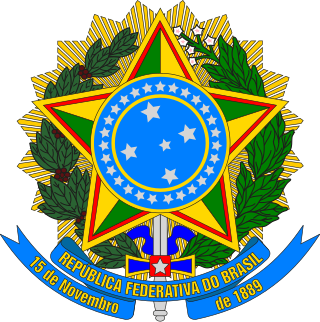
The law of Brazil is based on statutes and, partly and more recently, a mechanism called súmulas vinculantes. It derives mainly from the European civil law systems, particularly the Portuguese, the Napoleonic French and the German.
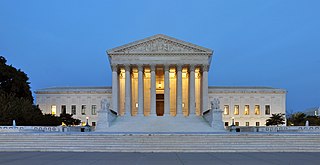
In most legal jurisdictions, a supreme court, also known as a court of last resort, apex court, and highcourt of appeal, is the highest court within the hierarchy of courts. Broadly speaking, the decisions of a supreme court are binding on all other courts in a nation and are not subject to further review by any other court. Supreme courts typically function primarily as appellate courts, hearing appeals from decisions of lower trial courts, or from intermediate-level appellate courts. A Supreme Court can also, in certain circumstances, act as a court of original jurisdiction, however, this is typically limited to constitutional law.

The judiciary of Pakistan is the national system of courts that maintains the law and order in the Islamic Republic of Pakistan. Pakistan uses a common law system, which was introduced during the colonial era, influenced by local medieval judicial systems based on religious and cultural practices. The Constitution of Pakistan lays down the fundamentals and working of the Pakistani judiciary.

The judiciary of Portugal is a system of courts that together constitute one of the four organs of Sovereignty as defined by the Portuguese Constitution. The courts are independent from the other three Portuguese organs of Sovereignty.
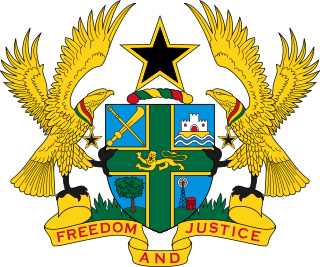
The Judiciary of Ghana comprises the Superior Courts of Judicature, established under the 1992 Constitution, and the Inferior Courts, established by Parliament. The hierarchy of courts derives largely from British juridical forms. The courts have jurisdiction over all civil and criminal matters.

The Supreme Court is the highest court in the Kingdom of Spain. Originally established pursuant to Title V of the Constitution of 1812 to replace —in all matters that affected justice— the System of Councils, and currently regulated by Title VI of the Constitution of 1978, it has original jurisdiction over cases against high-ranking officials of the Kingdom and over cases regarding illegalization of political parties. It also has ultimate appellate jurisdiction over all cases. The Court has the power of judicial review, except for the judicial revision on constitutional matters, reserved to the Constitutional Court.

The Supreme Court of Justice is the highest judicial court in Peru. Its jurisdiction extends over the entire territory of the nation. It is headquartered in the Palace of Justice in Lima. The current president of the Supreme Court is Javier Arévalo Vela.
The Superior Courts of Justice or Superior Sectors of Peru are the second highest courts of the Judicial system of Peru. It is only second to the Supreme Court of Peru. There is one court for each Judicial District which more or less correspond with each of the 25 regions of Peru. A Superior Court is subdivided into smaller courts according to its speciality:
The Judicial District of Cono Norte is one of the 28 Judicial Districts of the Judicial System of Peru.

The judiciary of Colombia is a branch of the State of Colombia that interprets and applies the laws of Colombia, to ensure equal justice under law, and to provide a mechanism for dispute resolution. The judiciary comprises a hierarchical system of courts presided over by judges, magistrates and other adjudicators.

The following outline is provided as an overview of and topical guide to Peru:
The Government of Guam (GovGuam) is a presidential representative democratic system, whereby the president is the head of state and the governor is head of government, and of a multi-party system. Guam is an organized, unincorporated territory of the United States with policy relations between Guam and the US under the jurisdiction of the Office of Insular Affairs.

The Judiciary of Spain consists of Courts and Tribunals, composed of judges and magistrates (Justices), who have the power to administer justice in the name of the King of Spain.

The Judiciary of Brazil is the group of public entities designated by the Brazilian constitution to carry out the country's judicial functions.
The Peruvian State, which is conceptually the Peruvian nation legally organized, is the entity that holds the government in the Republic of Peru. The state's structure is defined in the Constitution of Peru approved by referendum and promulgated in late 1993 and in force since January 1, 1994.
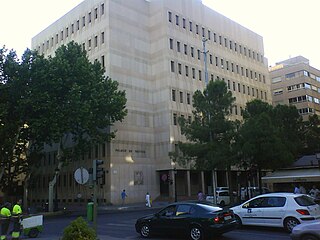
The superior courts of justice, or high courts of justice, are courts within the judicial system of Spain, whose territorial scope covers an autonomous community, as laid down in the Organic Law of Judicial Power.
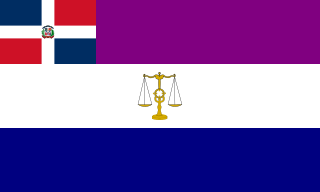
The Supreme Court of the Dominican Republic is the highest court existing in the Republic and is, therefore, the head of the judiciary in the country.
The Judiciary of Mexico officially the Judicial Power of the Federation is one of the three branches of government in Mexico, and the sole federal judiciary power. It is composed of the Supreme Court of Justice of the Nation, which serves as its highest court, the Federal Judiciary Council, the Federal Electoral Tribunal, regional courts, circuit and appellate collegiate courts, and district courts.

César Hinostroza is a Peruvian judge, lawyer, and fugitive who was a judge in the Peruvian Supreme Court from 2 January 2017 until his escape on July 11, 2018, in the midst of the political crisis in Peru. He is known for being involved in the CNM Audios scandal, a corruption scandal which led to his escape. When he escaped on 17 October, he was arrested following a warrant by Interpol, but was provisionally released on April 11, 2019.














